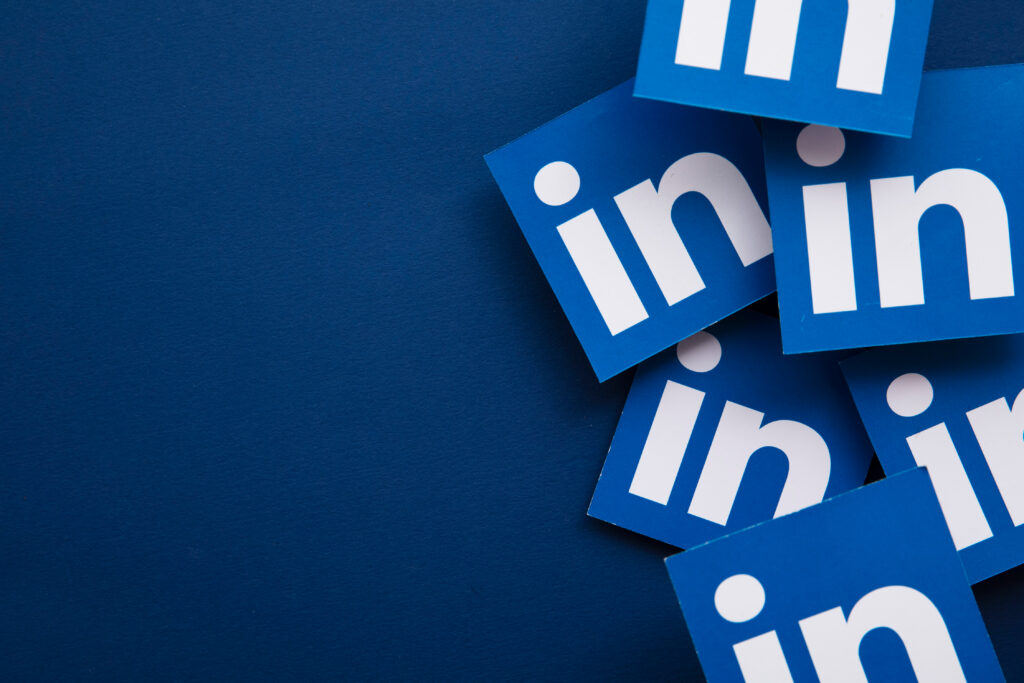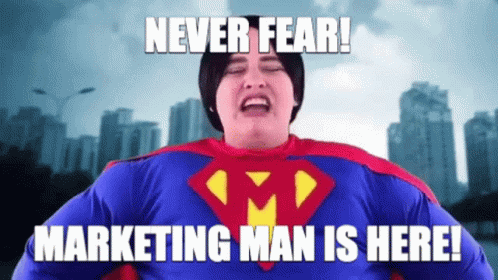B2B brand advertising can be a crazy rollercoaster ride, and many business owners in the B2B industry may feel like they don’t know how to effectively market their businesses. After all, while Google and Facebook Ads are great, those markets are often oversaturated with B2C companies, and it’s easy to feel like your B2B brand gets lost in a sea of bigger fish. Enter LinkedIn Ads.
Why use LinkedIn Ads for B2B?
Since LinkedIn is the world’s largest business-centred social media network, you’re missing out if you’re not leveraging LinkedIn advertising opportunities. And if you’re in the B2B industry, LinkedIn advertising is a must. The LinkedIn platform offers LinkedIn users a variety of benefits such as increased brand awareness, a higher amount of leads generated, detailed statistics about your LinkedIn campaigns, and more.
Again, though, many business owners may not know how to use LinkedIn Ads for B2B, which is why you should consider hiring a LinkedIn ads agency to help you make the most of the LinkedIn ad process and improve your campaign performance. Alternatively just give this post a read, since it should provide you with a solid foundational knowledge of LinkedIn Ads.
P.S. I know not everyone wants to sit and read a blog post, so if you want to see me talk you through a real-life example of how I’d approach LinkedIn Ads for a B2B business, give this video a watch!
Why should you trust me?
I get it. You’ve been taught not to trust strangers, so why listen to what some random guy on the internet has to say? Well, to start with, I have over half a decade of experience with paid ads, and I’ve spent more money on ads than you have on coffee during my time running my ads agency, Snowball Creations. Simply put, I know what works and what doesn’t. And the truth is that, if you do LinkedIn Ads correctly for your B2B company, you have a lot to gain!
This stuff really does work, and you can take my word for it because many of my clients have seen a 5x ROAS by using LinkedIn Ads.
How to use LinkedIn Ads for B2b
Now that we’ve gotten all the fluff out of the way and I’ve hopefully convinced you that I’m a trustworthy guy, it’s time to share all the knowledge I’ve gained from my many years of doing LinkedIn Ads.
I was raised to believe that sharing is caring, so I’m going to be walking you through exactly how I would approach setting up LinkedIn advertising campaigns and tracking for a B2B business. I’ll start with the basics, and then we’ll get more nuanced as we go along.
Pick the perfect platform
Before you can get started on learning the ins and outs of your chosen ad platform, you need to actually choose the perfect platform for your business. As you’ve probably guessed by now, LinkedIn Ads is always going to be my go-to for B2B businesses, but that doesn’t mean you should discredit other opportunities.
Facebook and Google Ads can also be great for B2B advertising, but in my experience, LinkedIn is going to yield the best results. Think of LinkedIn as a treasure chest that contains all the data you need to make your B2B ad campaigns great. LinkedIn has a wealth of data on its users, from their current job title to previous work experience and everything in between. In terms of LinkedIn display advertising, there’s way more depth than other platforms.

Testing, testing, one, two, three
So we’ve decided on the right platform for your brand (which, if you’re in the B2B sector, is almost always going to be LinkedIn), but what now?
Let’s break down the art of LinkedIn Ads. It’s about to get really geeky here, so don’t say I didn’t warn you!
Since the aim of this post is to show you a practical example of how I work through setting up a company’s LinkedIn Ads, we’re going to start with a bit of a brainstorming session that’s all about testing different ads.
Testing is sexy, at least in the ad industry. The more you test your ads, the more intimately you get to know them, so don’t be afraid to spend a lot of time on your testing strategies.
What are we testing?
First, we need to figure out what the different variables are that we’re going to be testing. For LinkedIn Ads, I’m going to test the following:
- Conversion formats
- Conversion types
- Audiences
- Creatives
- Copy
I should also mention that this is just to start with. Once we have a bit more information about what does and doesn’t work, we can always niche down and start focusing on smaller areas where we can improve.
And how much should you spend?
Figuring out your budget for your LinkedIn Ads can be tricky, and it depends on a lot of factors. I’ve said it before and I’ll say it again: if you’re not sure about running LinkedIn Ads for your company by yourself, hire a trustworthy marketing agency!
Not only will they do all the hard work for you, but they will also help you figure out how much to spend and how to best utilise the money in your ad budget.
For this walkthrough, we’re going to use a monthly budget of £2,000, which is the minimum amount that I would recommend you need. It may sound like a lot, but it can get used up very quickly!
For example, if your cost per click is £2, then that means you’re only getting 1000 clicks per month. These clicks are essentially votes to show us what works and what doesn’t. Our aim with testing is thus to use these clicks to help narrow down your target audience, creative, copy, and more. So when you look at the bigger picture, £2,000 isn’t really that much considering how much data you’re going to get from it. Anything less than that will just have a very small chance of succeeding.

Top of funnel testing
Alright, so we’ve assumed that you’re going to be investing £2,000 into your A/B testing. If you’re a newer business or you don’t have lots of site traffic, we need to start with a top-of-funnel strategy. In other words, we need to get people interested in your brand.
This means looking at things like which creatives a company already has to see whether any of those can be used for ad campaigns, or whether we need to come up with some cool visuals.
Obviously, the aim of B2B advertising is to get leads, so to take things a step further, I’d pit the landing page conversion versus the LinkedIn lead generation forms conversion to see which option does the best. LinkedIn lead generation forms can be amazing, so don’t neglect this, especially if you’re a newer business that’s not getting a whole lot of conversions just yet.
Next, it’s time to come up with the actual ads and do your testing to determine the winning formula.
Come up with a testing strategy
Ideally, you’ll want to come up with multiple options for things like copy, creatives, and audiences. But if you have a limited budget, it’s okay to have fewer testing options, as long as you’re confident with them.
For example, if you feel like you have an incredible piece of copy, you can stick to just one copy if you feel like you’ve nailed it. But if you do have the budget for multiple versions of your copy, or you’re simply not sure what will work, then I’d definitely suggest you test various options.
I would set up one campaign group for your LinkedIn top-of-funnel, and then you can have different audiences to test your campaign with. This would obviously depend on what it is that you’re selling, so make sure that the audiences you select are people who are likely to benefit from your product or service.
Next, it’s time to test your creatives. Again, testing various creatives is going to be your best option, because then you’ll get to figure out what works so much sooner! A pro tip would be that you don’t necessarily need to come up with your ad creatives from scratch – you can use what you already have.
LinkedIn offers multiple ad formats, such as:
- Single-image ads: I personally recommend pairing these with a punchy one-liner for maximum effect!
- Video ads: these are great for summing up some key elements of your business or for showing users a behind-the-scenes look at your business.
- Carousel ads: if you want to list different packages or simply showcase the benefits of your brand, carousel posts are the way to go.
LinkedIn allows you to do five ads at once, and I would say that you should use all the available spots! A common thing that you’ll find once you start doing paid advertising is that the more data you have, the better your ads will be, because you’ll know what to keep and what to get rid of. So, if you want to do five ads, you can do something like this:
- 2 single-image posts
- 2 video posts
- 1 carousel post
Now we have a better idea of what our ad strategy is, but that doesn’t mean that the work stops there. This is just a broad overview of some things you can brainstorm when trying to plan your LinkedIn Ads campaigns, and now it’s time to get really specific.

Time to get detailed
Now that you have a list of your different audiences, creatives, copy, and conversion types, it’s time to split those up to get a really clean testing matrix. This gets very complicated very quickly once you take all the different factors into account, which is why I’m going to break it down for you a bit to show what you’d be testing for your different ad campaigns.
Based on all the factors mentioned above, we’re going to be doing six ads to ensure that we are truly testing and cross-testing all the factors mentioned above.
So, those two single-image ads, two video ads, and carousel post are all going to be tested across all our audiences to see which ad format performs best for which target audience. For the sake of this exercise, we’re going to pretend we have three audiences. And then remember that we’re also going to be testing different conversion methods.
If you’re already confused, let me make it simple for you. We have:
- 5 ads (1 single-image, 2 videos, 2 carousels)
- 3 audiences (these will be dependent on your business)
- 2 conversion methods (landing page and lead gen forms)
And this is how we’re going to do our strategy:
- We’re going to take our 5 ads (think of them as one big group) and run them 3 times to account for our three audiences. So we’re going to have 3 ads. These are all going to be testing landing page conversions.
- We’re going to copy those 3 ads and change the conversion type from landing page conversions to lead gen form conversions.
To summarise: we’re essentially going to test the same ad formats (single-image posts, video posts, and carousel posts), but with different audiences so that we can figure out which ads work best for which audiences. And then we’re also testing all of these ads and audiences with our two conversion types: website conversions versus lead gen form conversions.
Generally, website conversions are few and far between, but the quality of the leads are much better. LinkedIn lead gen forms, on the other hand, tend to have high quantities, but they aren’t always high quality. Each option has its pros and cons, so the only true way of figuring out what works for your business is to test them.
Breaking your ads down this way may seem quite repetitive and like a lot of work, but it will allow you to quickly determine which ad, audience, and conversion type is performing best!

Round 2
If you feel like your head is about to explode from all the information I’ve just given to you, I’ve got bad news: we’re just getting started.
The first round of extensive testing is just a starting point to help you figure out which ads work. The aim is to get as much data as possible and then use that information to determine how you can improve your ad strategy.
For example, if your company page ends up getting dozens of conversions but your lead gen form gets nothing, it makes sense to scrap all ad campaigns using lead gen forms and instead stick to the company page since you know what works.
Similarly, if your video ads are performing much better than your carousel and single-image ads, then why not pour more money into that? Get rid of your carousel and single-image posts and instead come up with new video ideas to test instead.
Or, if you haven’t tested different copy variations yet, you can use one or two videos with different copies to see which one performs best. It’s a continuous process of trial and error. You A/B test, you learn from it, and you improve. Each time you tweak something, no matter how small, you get valuable information about what works.
Middle of funnel
Our entire strategy up until now has been focused on the top of funnel, but let’s briefly run through how I’d approach the middle-of-funnel strategy for a B2B brand using LinkedIn Ads. Where your top-of-funnel strategy is aimed at increasing brand awareness, your middle-of-funnel approach will target people who have already engaged with you in some way.
Once we’ve gotten a high enough volume of data, I’d recommend doing a long 90-day stack that combines site traffic, video views, the engagement on the LinkedIn company page . . . you get the idea. Basically, we’re just including a wide variety of engagement forms.
This is because it’s much easier to chase people via LinkedIn Ads if you’re a B2B company because you have that professional relationship and also because business decisions tend to take people much longer, which means it’s realistic to chase them for longer periods

That’s essentially why I suggested 90 days, although there are, of course, other options as well. You could, for example, do a 14 or a 40-day stack. Shorter stacks generally have a hotter target audience, so they tend to yield better conversion results. The issue is that you need to have enough people to keep the frequency in check. As with everything ad-related, it’s a balancing act, and one that likely requires a bit of trial and error.
For the sake of this example, let’s stick to 90 days for our middle of funnel, and just implement a strategy similar to what we did in the top of funnel, but this time focusing on people who have already engaged with you. So again, you’re going to be testing different copies or creatives.
The difference is that for middle of funnel, you might want to get a bit more specific with your copy and creatives. Remember that these people have already engaged with you, which is why we’re targeting them again via LinkedIn advertising. They have their feet in the door, metaphorically speaking, and your aim is to seal the deal.
So, instead of ads that simply inform them of your business, come up with ways of convincing them why they should use your business. Use client testimonials, go into more depth, tell a story . . . Give people more details!
Again, you’re going to be testing these different ads extensively. Naturally, the strategy for top of funnel and middle of funnel advertising will differ since they are different worlds, but the principles remain the same!

Some final words
That’s all he wrote, folks. That’s a pretty rough overview of how I’d approach coming up with a LinkedIn Ads strategy to implement in a B2B marketing campaign, and I hope that this helped you if you’re considering using LinkedIn advertising for your B2B company!
As mentioned, I suggest using a budget of £2,000 per month because that will give you enough data to start making your ads work for you, but if you want to spend more, you will likely get better results and also figure out the winning formula much easier.
And if you have no clue what I’m talking about at all in this post, that’s okay! The world of paid ads is very vast, and this was a more in-depth look at a very specific niche, which is LinkedIn Ads for B2B companies. If you’re feeling a bit like a lost sheep, spend some time reading very beginner-friendly blog posts, or watching some basic YouTube videos that cover these things in their simplest forms. There’s an endless amount of knowledge to be gained on the topic!
Of course, if you still feel out of your depth and would like professional assistance, get in touch with my ad agency by filling in the form below to learn how we can help you. We’ll be there every step of the way, from setting up your LinkedIn campaigns to managing the LinkedIn Insight tag, and our results really speak for themselves!